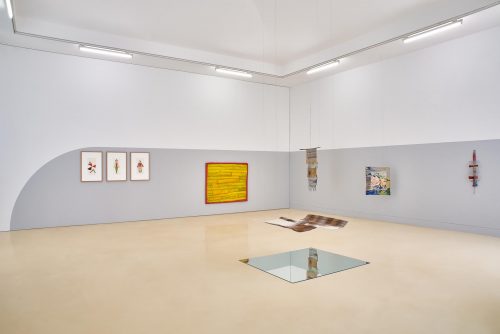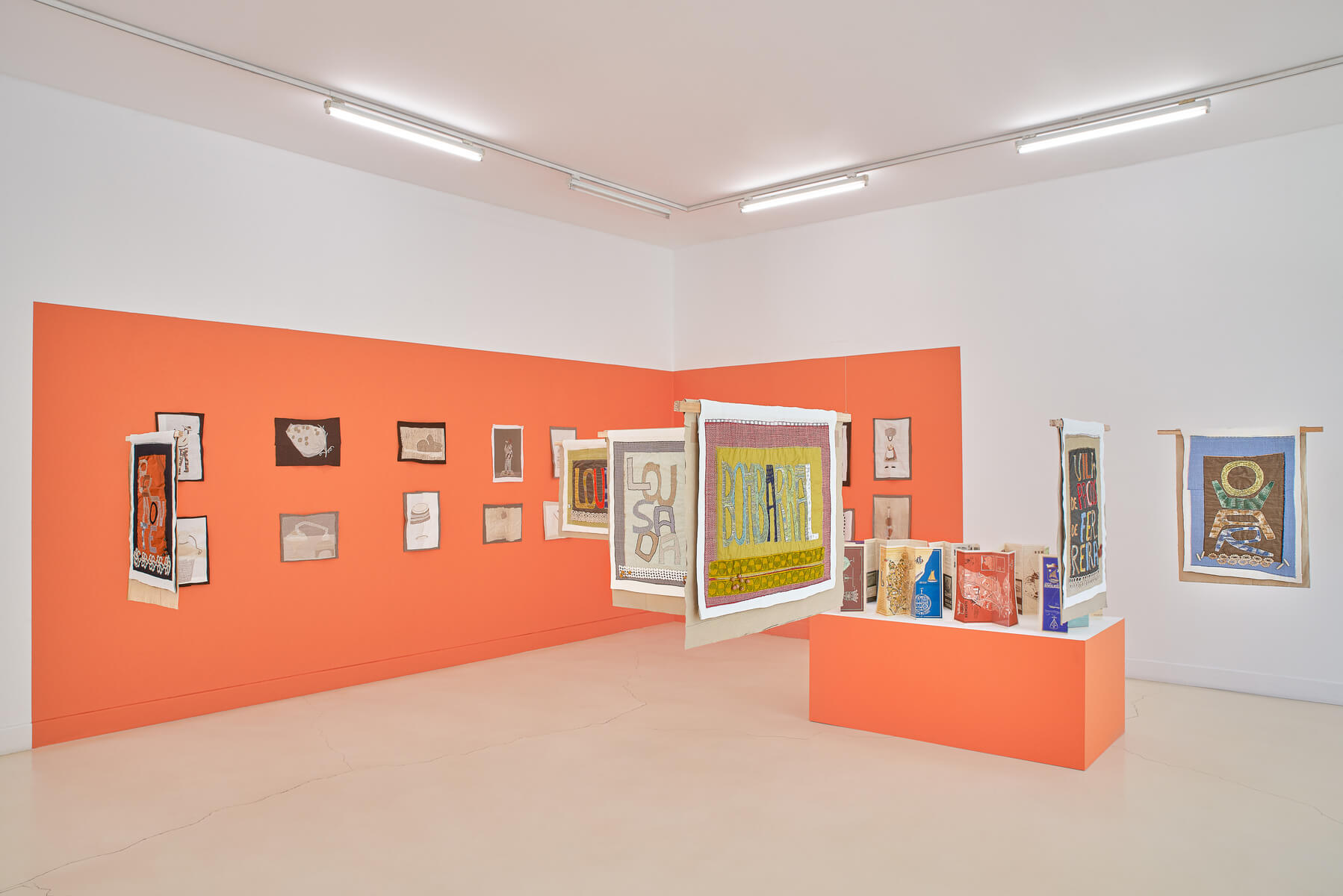This afternoon conversation introduces the work by Maria Altina Martins and Fernando Marques Penteado. The artists will be in dialogue with the exhibition curator and director of Galerias Municipais Tobi Maier. On the occasion of the event, Galerias Municipais will launch the exhibition zine, edited in collaboration with and designed by Ana Baliza.
The tapestry of Maria Altina Martins has been strongly influenced by an extended period in the north Indian city of Varanasi, considered the spiritual capital of the country. Altina Martins explores the themes of motherhood, fertility and nature through a continuous discovery of the possibilities of fibre and fabric. The surface of water and the sea has also been a continued current in her work, interpreted in a rather experimental and improvised way in the pieces “Caravela”, “Ártico”, “Plâncton”, “Vento”, which incorporate fibres of cotton, wool and silk, stainless steel and copper, wood, glass, acetate and different types of paper. The visceral works by Altina Martins are a vivid reminder of the possibilities of material amalgamation in textile art. Brilliant and reflective, they come close to a handcrafted jewel.
Combining embroidery with found objects and texts, much of Brazilian-Portuguese artist Fernando Marques Penteado’s recent work was inspired by crime novels and developed into projects of imagined characters. For this exhibition, Marques Penteado has developed a new body of work inspired by his frequent visits to Portugal since the 1970s and a period of living in Porto, between 2014 and 2018. The installation presented here is entitled “Cultures in a Map” and contains maps, flags and embroidered subtitles. The development of this body of work departed from the ROTEP maps issued by Turismo de Portugal in the 1950s and 60s, acquired by the artist from a second hand store in the Lisbon. Each ROTEP map describes one of the 272 municipalities in Portugal. Their exquisite design, precise information and explanatory texts inspired the artist. Marques Penteado selected eight municipalities and interpreted them in drawings and embroi-dery, resulting in an installation that conceptually provides multiple entries: from ethnography to topography, archaeology to history, and the significance of tourism for the country today. Other works from the series embroidered by hand, in cotton and wool, depict the traditional professions of the fisherman or the washerwoman, animals such as lobsters and other industries such as distillery or mining. While at first sight “Cultures in a Map” appears to be referring to our immediate Portuguese context, this new body of work also translates into another realm that has been dear to Marques Penteado: the interpretation of the powerful zodiac signs.






